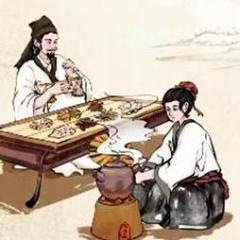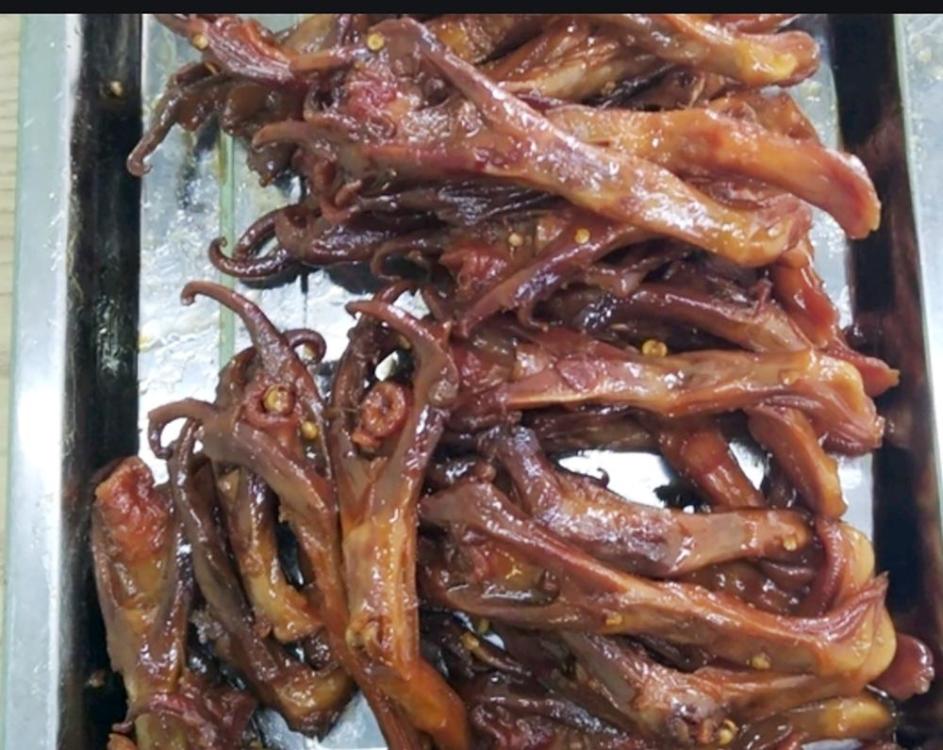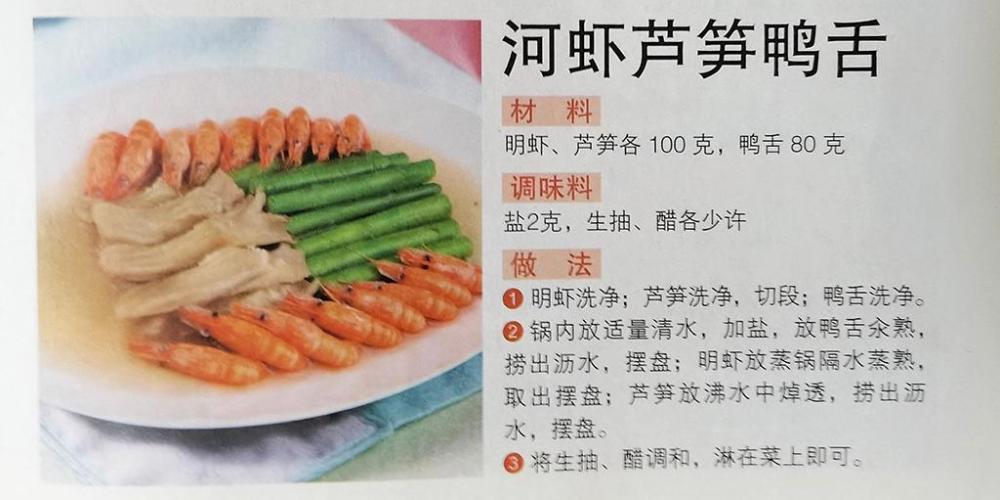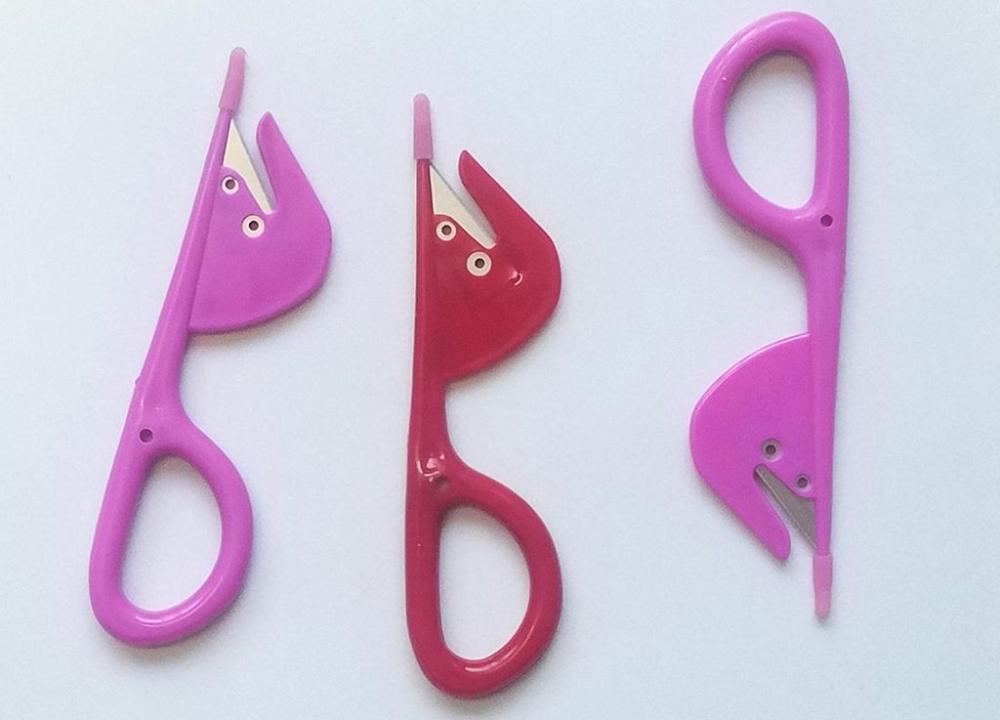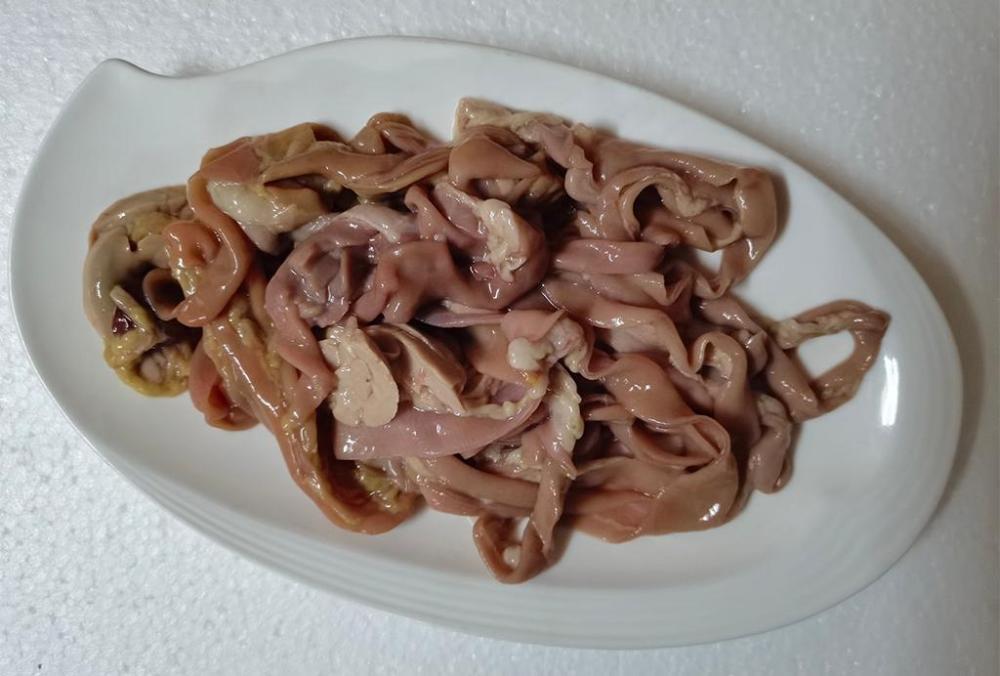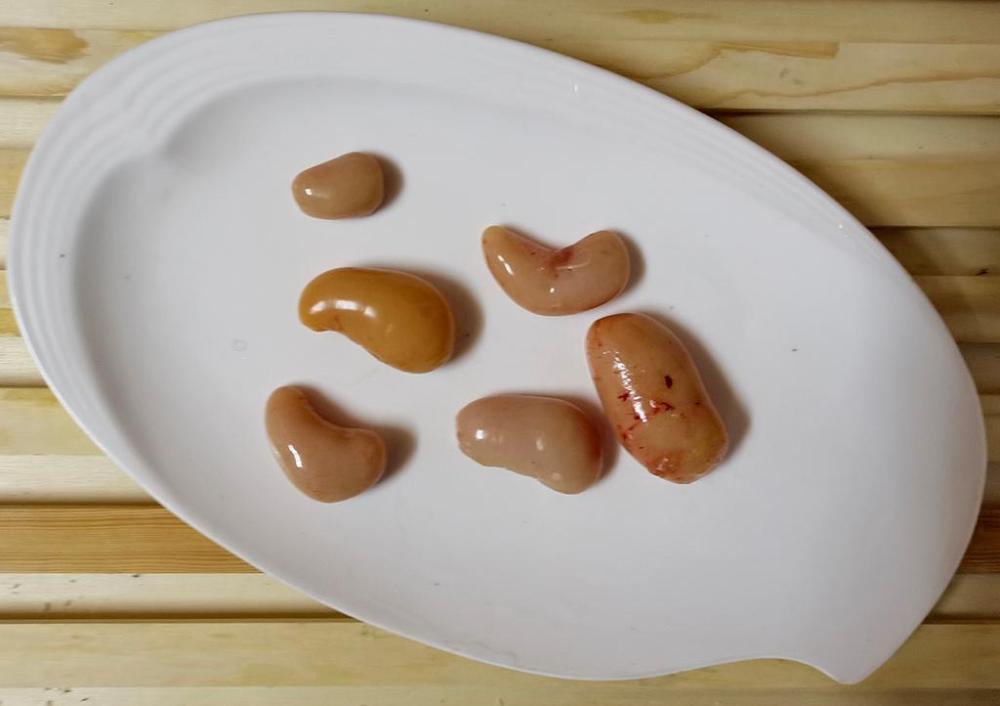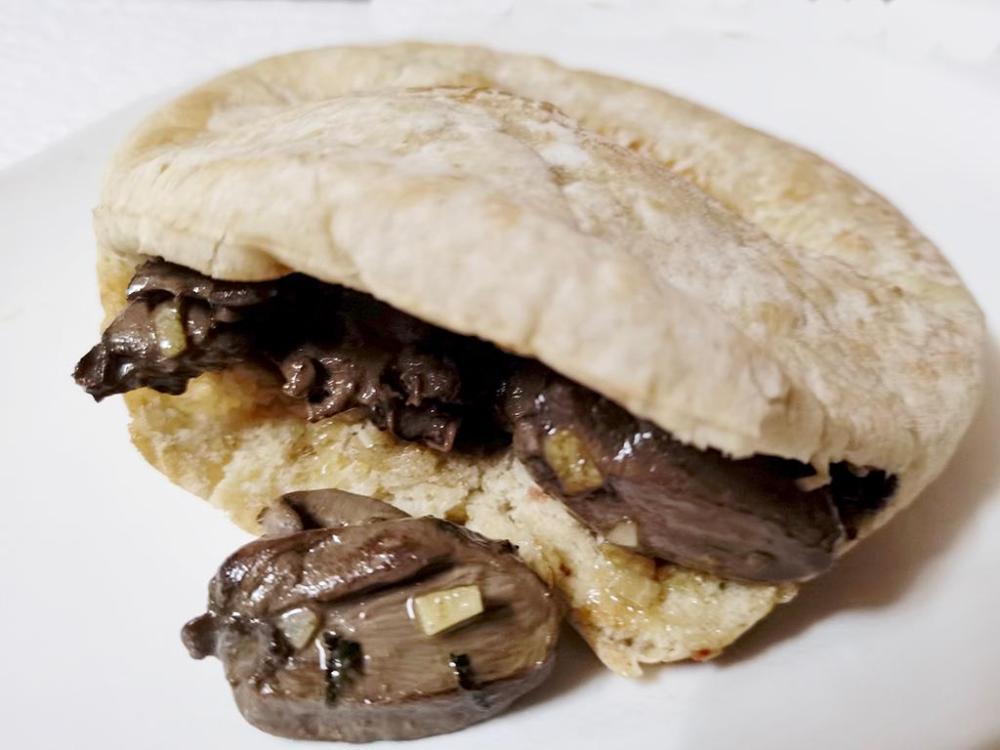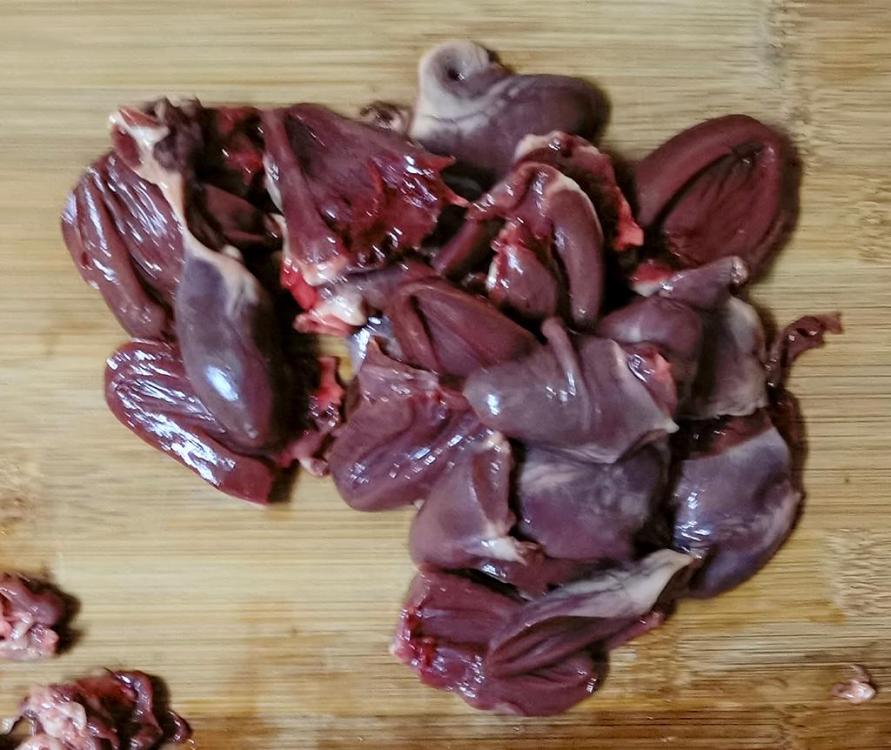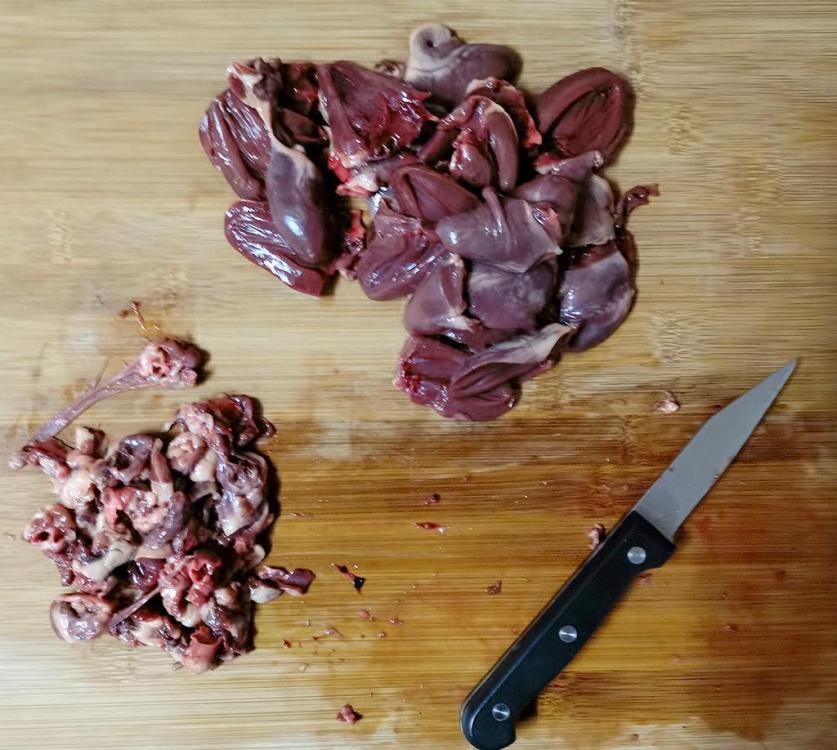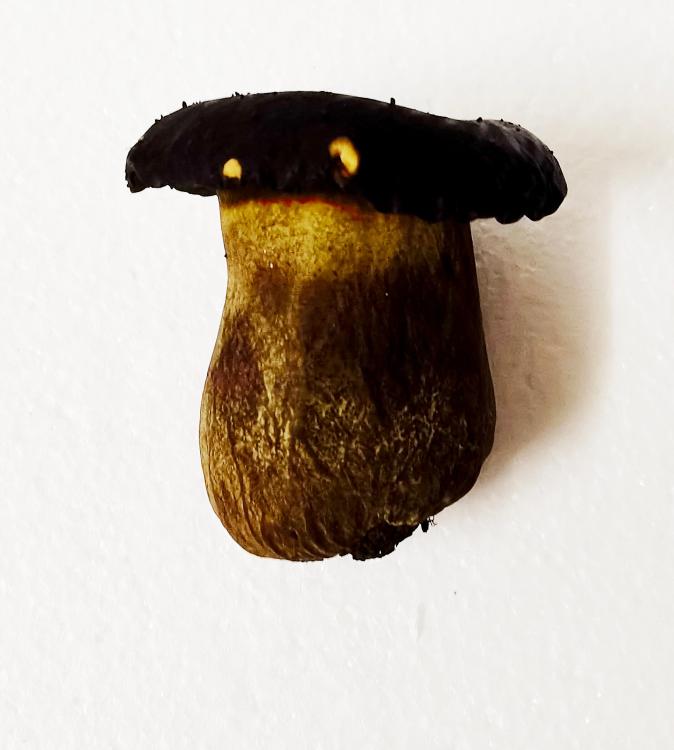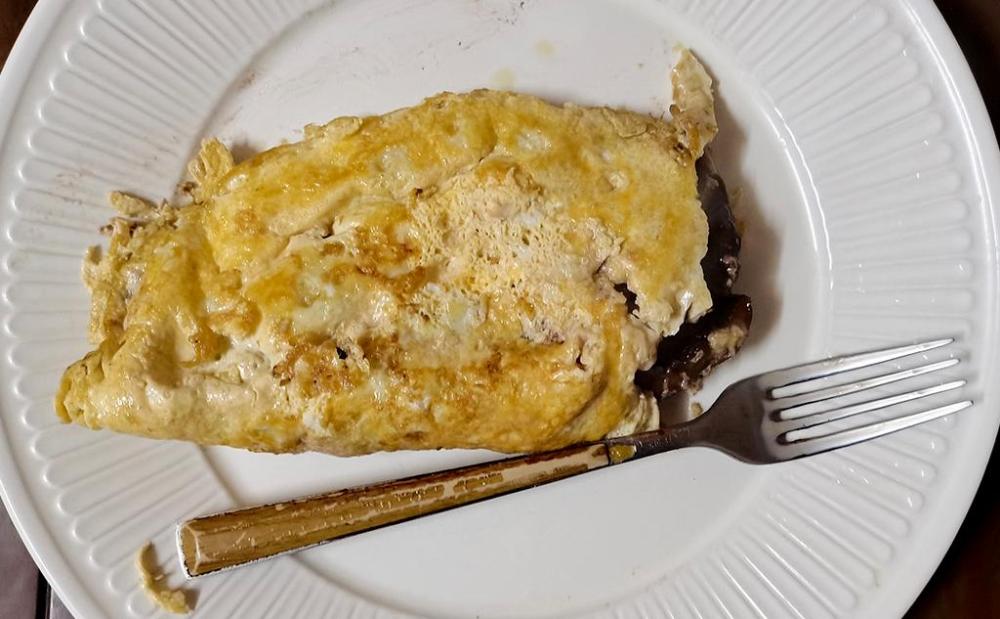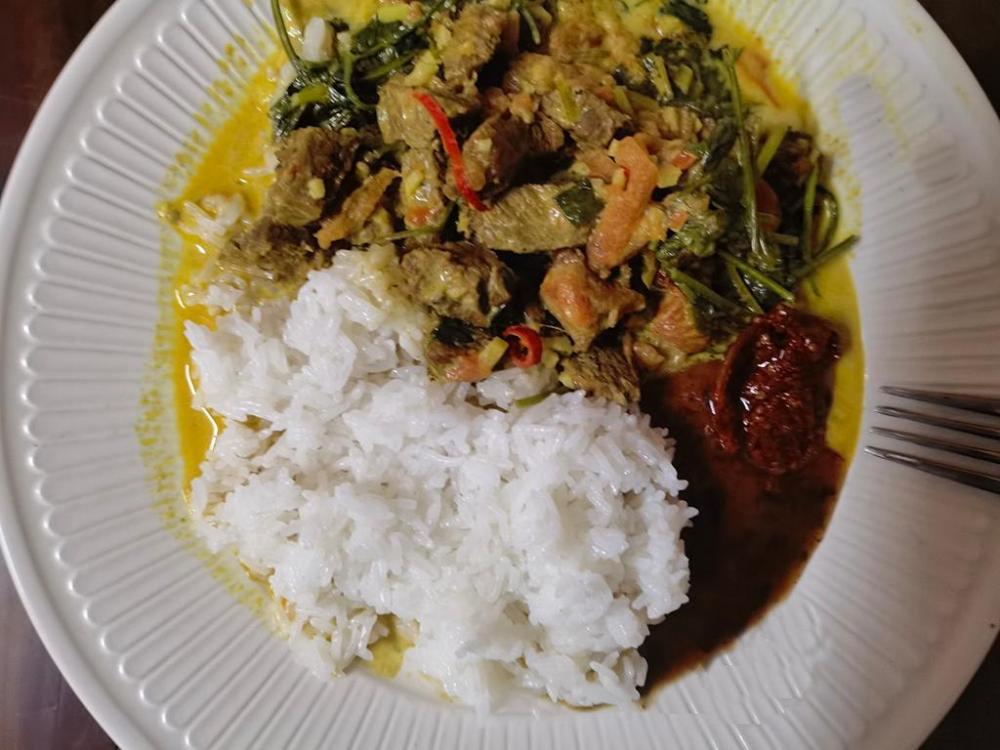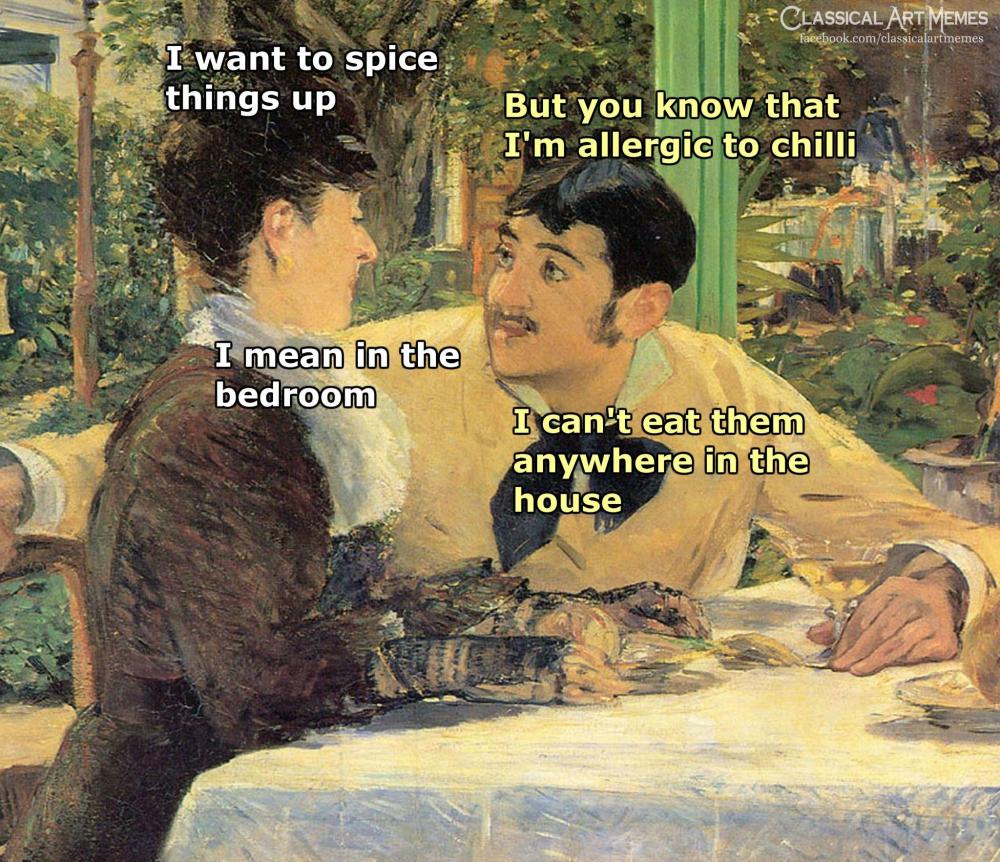-
Posts
16,675 -
Joined
-
Last visited
Content Type
Profiles
Forums
Store
Help Articles
Everything posted by liuzhou
-
I seem to detect a bit of a sense of humour failure somewhere. I cook squid for one minute or one hour, never between the two. Usually, the former. But I suspect squid don't count as poultry.
-
Wait till you get a bitter one, then tell me it's a waste of time. Simmering hearts seems like a waste to me. Fry the fellas as nature intended! That's why they have the fat surrounding them.
-
I do go for that!
-
Well, I did know it actually. My mother was from near Lyons. An interesting article from the BBC, nonetheless. While France is renowned for its pains au chocolat and croissants, Lyon has a long-standing tradition of tucking into wine and offal at breakfast.
-
This was the first thing I ever ate in what was to become my future home city. It was 1997 and I was visiting Liuzhou from Hunan Province, where I then lived. The person I was visiting took me for dinner in the hotel I now live next door to all these years later. I moved in 1999. On the table as we sat down was a plate of what looked to me like small, strangely shaped, bifurcated bits of gristle and a bowl of dipping sauce consisting of soy sauce and chilli peppers. Something to munch on as we contemplated the menu. I tentatively reached for a lump of gristle, duly dipped it and slipped it into my mouth. All I tasted at first was the dip, but gradually the flavour of what was dipped came through. A sort of intense duck flavour. The thing was crisp on the outside, but had a creamy mouthfeel on the inside and was oh so tasty. Fried Duck Tongues What I was holding was a deep fried duck tongue 鸭舌 (yā shé). Like most people, I guess, I had never considered whether ducks had tongues or not. I now know they do, but their tongues are not like ours; they have no taste buds. The tongues are merely used to manoeuvrer food into the right position to slip down their gullets. I know people who eat like that, too. Duck tongues are a hugely popular snack or beer food in China; less so elsewhere, it seems. There are two main ways to prepare them here: the first being a Cantonese preparation where they are shallow fried and finished with soy sauce, rice wine and sugar, the second with more of a Hunan influence sees the tongues deep fried and sprinkled with chilli flakes and cumin. I like both, but my preference falls to the latter. Cantonese cooks also steam the tongues with ginger and rice wine. For some unknown reason, these are never seasoned and for known reasons sorely need to be. I avoid those. There is a recipe of sorts here for spicy duck tongues which is very similar to how I prepare them. Ignore the TCN (Traditional Chinese Nonsense) advice about these being a “cold” food and eating them not provoking anger! I only get angry when they run out! Advertising for industrially produced duck tongues Ready to eat tongues are often sold on supermarket deli counters and there are industrially cooked and packaged versions in convenience stores, but the raw tongues are seldom seen in regular stores. I get them from the local wet market. In the west, I’d be looking in Asian markets or online. They are sold frozen in London’s Chinatown, I know. Finally, here is another recipe from my collection of Chinese language books. 河虾芦笋鸭舌 (hé xiā lú sǔn yā shé) River Shrimp, Asparagus and Duck Tongues 100 gram river shrimp 100 g asparagus 80 g duck tongues soy sauce, salt, vinegar Wash the shrimp, asparagus and tongues. Boil the tongues in salted, boiling water and drain. Reserve. Steam shrimp until done. Blanch asparagus and drain. Dress to taste with light soy sauce and vinegar. Serve. Again, no indication of how long to boil the tongues. Some other recipes recommend up to 30 minutes, but that seems excessive to me. But then I never boil them; always fry.
-
Yeah. I have some green ones somewhere, too. They came in a batch of 10 in mixed colours. I find them useful for all sorts of things other than what the manufacturer intended.
-
...and here is a recipe from one of my Chinese language cookbooks. I have translated the ingredients and summarised the method. Note the lack of detail which is typical of Chinese cookbooks. No timings. 泡椒鹅肠 (pào jiāo é cháng) Goose Intestines With Pickled Chili Peppers 300 grams goose intestines 100 g pickled chili peppers 1 red bell pepper 1 clove garlic 1 scallion 10 g ginger 5 g corn or potato starch salt sesame oil Clean goose intestines and cut into sections. Chop peppers. Mince garlic. Chop scallions. Set aside. Boil goose intestines in boiling water, remove and drain. Heat oil in pan and add ginger, garlic and peppers. Stir fry until fragrant. Add intestines and salt. Thicken with starch. Sprinkle with sesame oil and serve.
-
Perhaps the most divisive ‘nose-to-tail’ part of poultry is a part which many people find repulsive, yet many have eaten unawares, albeit probably not from poultry. Chicken Intestines I’m talking intestines which, of course, have been used as natural sausage casings for centuries*. Poultry intestines aren’t normally used in this way but are very popular in parts of the world. In China, a spicy Chongqing hotpot is incomplete without having some intestines to drop in to quickly cook. Chicken or duck are common but most highly prized are 鹅肠 (é cháng), goose intestines, which in some birds can be as much as three metres / nine feet long. Intestines are also stir-fried with soy sauce. Poultry intestines can be hard to avoid in Hong Kong. Goose Intestines Across SE Asia, poultry intestines are valued highly. Marinated and fried chicken intestines are used in the Philippines for a dish known as ‘Adobong Isaw ng Manok’, or just ‘isaw’, for example. In South Africa, grilled intestines are often part of a braai, or barbecue. Alternatively, they can be curried as ‘curry malana’. Recipe here. Of course, the Southern States in America have their chitterlings or chitlins, but do they also eat poultry intestines? Of course, given the intestines function in the bird, correct and careful preparation is required. The tubes have to be thoroughly cleaned. Squeezing hem between the finger tips can remove the bulk of any waste, but then people get inventive. There are those who destroy their coat hangers to improvise tools to push out any unwanted material. Others fashion mini hoses to wash away the detritus. Many, including me cut the things open and clean under running water. A pair of scissors will do the job, or you can buy these dedicated tools to slit open the guts. Intestine Cutters The Chinese for ‘sausage’ is 腊肠 (là cháng) which literally means ‘cured intestine’.
-
Apologies. I meant the connecting tubes etc between the various parts of the heart have to be removed. The cleaned ventricles are eaten.
-
I've had Planter's peanut oil and can taste peanut. In fact, I've never found a peanut oil that I can't taste. I'm no super-taster; it may just be that I dislike the taste in some applications and, so notice it more. Peanut oil is the main oil used round here. There are certainly some super-peanuty oils such as your Taiwanese sample.
-
I guessed but it is topic about poultry.
-
Thanks. Yes, I knew they were eaten in parts of the USA, but wasn't sure which. Love the euphemistic name, 'dainties'.
-
Bull fries from chickens? And why would ranchers have more access to chicken testicles?
-
I’ll get this one out of the way. 鸡蛋 (jī dàn) means chicken eggs which obviously come from the hens, but 公鸡蛋 (gōng jī dàn) means roosters’ eggs! 公鸡蛋 - Chicken Testicles What we are talking here are chicken testicles which are popular delicacy here in China. In western countries, few people even know roosters have such appendages as they are found inside the bird next to the kidneys, near the backbone. The little pink (usually*) sausage-like, vaguely egg-shaped nuggets are, no surprise, believed by followers of TCM to enhance male virility. They are known by various names, such as prairie oysters**, rocky mountain oysters**, rooster fries, chicken beans, and many more names. “Chicken balls” is a mainly Chinese-American preparation, generally unknown in China. They do not contain reproductive organ meat! The testicles can vary a lot in size depending on the age of the rooster, but are generally larger than one might expect until you realise that the average rooster on the farm has to “service” 20 to 30 hens per day! Testicles showing size variation The prep is simple. They only require washing and any strings removed. The outer skin is usually removed like peeling a sausage. They are then usually simmered in a simple broth with vegetables or, especially, mushrooms. Sometimes, they are briefly marinated in rice wine before being introduced to the broth. Fifteen minutes maximum will see them fully cooked, but true connoisseurs prefer them rarer, with a soft tofu like texture even heading to liquid in the centre. Fried chicken testicles are a popular street food in Taiwan and I’ve seen grilled sets on skewers (ouch) in various parts of China. The taste is mild and reminiscent of chicken livers. If you imagine chicken liver flavoured tofu, you’ll be close. I find them quite pleasant, but don’t go mad looking for them, not that I have to here. They are easily available. They seem to be seldom eaten in the west, so are not so easily obtained most places, although I hear that in Hungary, kakashere pörkölt (rooster testicle stew) is a fairly popular dish at festivals. Turkey testicles can be treated in the same fashion, but turkeys (火鸡 - huǒ jī, literally 'fire chicken') are rare in China. * Silkies, aka black chickens or black-boned chickens (although they are almost always white-feathered), have black testes matching the colour of their flesh and bones. Their testes are seldom available in western countries, but can be found here. ** These terms are also applied to the testicles of other animals.
-
River Cottage has nice everything it has!
-
If you think Huy Fong Sriracha is too hot to appreciate, don't go to actual Sriracha in Thailand! The locals there wonder why they forgot to put the chillies in it!
-
@Anna Nasked me recently on the Snacking while eGulleting topic about dealing with chicken hearts and their preparation, saying I answered that I always prepare them by removing excess fat, veins, ventricles, and membranes, etc and I promised a picture. This isn't quite it; these are duck hearts but the principles are the same. Then I got thinking that I eat a lot of poultry viscera / offal and perhaps a dedicated topic would be useful to some people. We've got the various livers obviously, but also hearts, kidneys, gizzards, duck or goose intestines, chicken testicles, duck tongues and more. Anyway, I'll start with the duck heart preparation, cooking and eating. This was my lunch. First the hearts. First this lot needed washing. Duck hearts as bought Them I trimmed off most of the excess fat using a small paring knife (scissors would work, too) and cut the hearts in half lengthwise. This exposes any veins etc, which should be removed as they are unpalatable and can make the hearts bitter. Trimmed hearts. The excess fat, veins and ventricles are on the left. The cleaned hearts at top centre. The hearts - I did remove that fat on the piece at the top after taking the photo. Chopped about 4 cloves of garlic and one hot red Facing Heaven chilli pepper. Fried those in a cast iron frying pan / skillet along with the hearts in olive oil with salt and pepper for about 5 minutes, testing for just doneness. You want them when they just leave medium rare otherwise they get very tough. Cooking Hearts These I served in wholewheat pita breads. Three servings (all for me) from 250g of hearts purchased. Spicy Duck Hearts in Pita Of course, I used a spicy approach and they do work very well with garlic, but feel free, as always, to experiment with your favourite flavours. I would have added some finely chopped coriander leaf / cilantro at the end but forgot to buy any . They would be good with a salad, too. Then there is breakfast and there is nothing nicer than duck hearts on toast. Duck Hearts on Toast
-
I don't find peanut oil 'flavorless' at all. I can always detect it. Not always a problem, but sometimes. I loathe eggs fried in peanut oil, for example. Rice bran oil is truly 'flavorless' and has a higher smoke point. It's my go to.
-
I think that is dependent on location. I've often had it served with rice. Ground/ minced meat seldom. Chopped meat gives more of a bite rather than baby food.
-
-
30 years ago, there was a Nepalese restaurant in London that I used to frequent. Kathmandu native owners. Wonderful food. I wonder if it's still there? Can't see it on Google, but then it was always hard to find. Stuck down in a basement with a tiny sign at street level. 8 years ago, I fulfilled a dream and visited Nepal. Not disappointed, but yes, the cuisine was much more diverse than I expected from such a relatively barren area of the world. Lovely people, too.
-
Beef and coconut curry with tomato, garlic, onion, chilli, coriander/cilantro, lime pickle and tamarind chutney. Rice.
-
I realised they were made in the USA, but assumed by a Chinese owned organisation. The name is Chinese, after all, but with a non-standard transliteration. 美全 means something like 'delicious everything', but in Mandarin is 'měi quán' and in Cantonese, 'mei cyun'. I spotted they carry goods from all over east Asia and SE Asia. Lucky you!
-
There are literally hundreds, if not thousands of commercially prepared hot sauces in China. I guess most people know 老干妈 (lǎo gān mā) but there are many more which are worth exploring. Many people and many restaurants also make their own. My own favourite is this. It may not technically qualify as a sauce (I'm not sure what criteria are being applied) but I certainly use it like a sauce - almost every day. Known as 剁辣椒 (duò là jiāo), literally "chopped hot peppers", the ingredients are chilli peppers, water, salt, garlic, MSG and some preservatives - much like a sauce. It is from Changsha, capital of Hunan province, one of China's spiciest provinces and 坛坛香 (tán tán xiāng) is the largest chilli processing company in the province and has several products. The company name refers to 'earthern jar fragrance' as chilli sauce was traditionally made in earthern jars as can be seen in their logo. Now it's made in traditional factories. I don't know for sure that it's exported, but it would surprise me if not .


